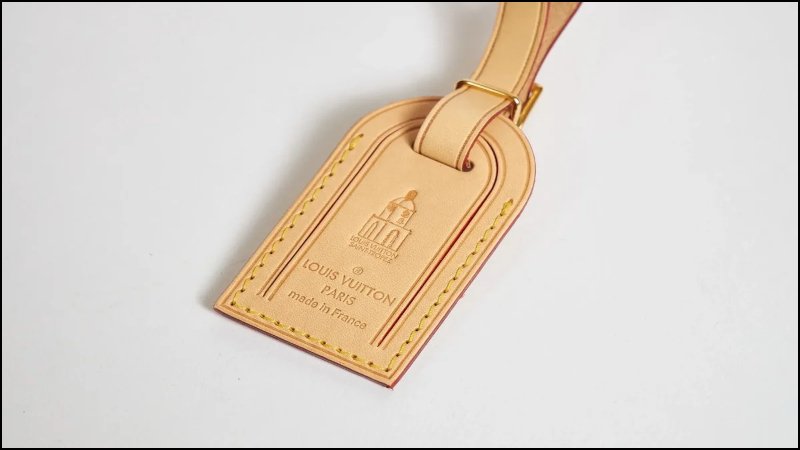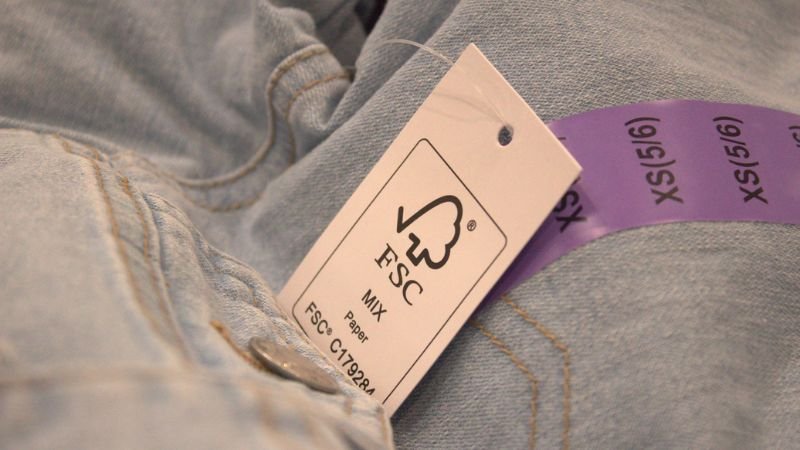Matte Lamination: Guide for Clothing Brand Tags & Packaging
For any clothing brand, the details matter. Beyond the fabric and design, elements like hang tags, labels, and packaging play a crucial role in shaping customer perception. One such detail is the finish applied to these printed materials. This guide focuses specifically on Matte Lamination, a popular surface treatment used frequently on tags and packaging within the apparel industry. Understanding what matte lamination is and how it functions can help clothing brand owners make informed decisions about presenting their products effectively. Let’s delve into the details
1. First Things First: Why Consider Lamination for Your Apparel Tags & Packaging?
Before diving into specifics, let’s establish what lamination itself involves. Lamination is a common print finishing technique used after an item, like a clothing tag or packaging material, has been printed. The process involves bonding a very thin layer of plastic film to the surface of the paper or cardstock.
This applied layer serves two primary purposes. Firstly, it offers significant protection. The plastic film acts as a barrier against moisture, spills, tearing, and general wear and tear, greatly increasing the durability of the tag or package. Secondly, lamination enhances the visual appearance and tactile quality of the printed piece. It can make colors appear more vivid or, depending on the type, provide a unique texture, elevating a simple paper item into something more substantial and perceived as higher quality.

2. Defining Matte Lamination: The Subtle Touch of Quality
Matte lamination is a specific type of surface treatment applied during the print finishing stage. Unlike its glossy counterpart, the defining characteristic of a matte finish is its non-reflective surface. This effect is achieved because the matte plastic film diffuses light rather than reflecting it directly, resulting in a muted, low-sheen appearance. This process typically involves applying a thin film, often made from materials like PET (Polyethylene terephthalate) or containing adhesives like EVA (Ethylene-vinyl acetate), onto the paper surface using heat and pressure – the core of the lamination process.
The outcome is a smooth texture that feels distinct to the touch, offering a subtle sense of quality. Think of the difference between frosted glass (matte) and clear, shiny glass (gloss); both protect, but they interact with light and feel very different.
3. Key Characteristics of Matte Lamination: Sophistication and Clarity
Because it scatters light rather than reflecting it intensely, there is minimal glare, making text and designs easy to read even under direct lighting. This quality contributes to a sophisticated look often associated with premium products.
- Unique Tactile Feel: One of the most distinguishing features is its distinct tactile feel. A matte laminated surface often feels smooth, sometimes described as velvety or having a soft touch quality. This pleasant texture can enhance the user’s interaction with the tag or packaging.
- Fingerprint Resistance: Compared to gloss lamination, which readily shows fingerprints and smudges, matte surfaces are much more resistant. The non-reflective nature helps to conceal oils and marks, keeping the product looking cleaner during handling.

4. The Upside: Why Matte Lamination Works Well for Clothing Brands
For apparel businesses aiming to create a specific brand perception, matte lamination offers several compelling advantages:
- Elevates Brand Image: The subtle sophistication and premium feel associated with a matte finish instantly elevate the perceived value of the product. This makes it an excellent choice for brands cultivating a high-quality or luxury packaging image.
- Improves Readability: On hang tags containing essential information (size, care instructions, materials), the low glare of matte lamination significantly improves readability under various lighting conditions, ensuring customers can easily access details.
- Complements Design Elements: A matte surface provides an excellent base for contrasting finishes. Techniques like metallic foil stamping or glossy spot UV coating stand out dramatically against the non-reflective background, adding visual interest and highlighting specific elements like logos or patterns.
- Enhances Tactile Engagement: The unique tactile sensation of matte lamination—that smooth, almost soft touch—creates a positive physical interaction when customers handle the tag or packaging. This sensory detail can subtly reinforce brand quality and leave a memorable impression.
5. Things to Consider: Potential Downsides of Matte Lamination
While matte lamination offers significant benefits, it’s also important to be aware of potential drawbacks when deciding if it’s right for your clothing brand’s tags and packaging:
- Slight Color Impact: The nature of the matte finish can slightly mute or soften colors compared to how they appear on uncoated paper or under gloss lamination. Deep, vibrant colors might lose some of their intensity, which is a consideration if exact color matching is critical.
- Considerations Regarding Scuff Resistance: While excellent at hiding fingerprints and smudges, matte lamination can be more susceptible to showing scuffs or scratches, particularly darker colors. Deep abrasions can sometimes be more visible on a matte surface than on a gloss finish.
- Potential Cost Comparison: Depending on the supplier and specific materials used, matte lamination can sometimes be slightly more expensive than a standard gloss finish. While the difference may be minimal, it’s a factor to include in budget considerations.
- Paper Stock Requirements: For lamination (both matte and gloss) to be applied effectively without warping or curling, the underlying paper stock generally needs to have a certain minimum thickness and rigidity. Very thin or flimsy paper might not be suitable.

6. Matte vs. Gloss Lamination: Head-to-Head for Apparel Branding
Choosing between the two most common lamination types – matte and gloss – often comes down to understanding their distinct characteristics and how they align with your brand’s specific needs. Both offer protection, but their aesthetic and tactile differences can significantly impact how customers perceive your apparel tags and packaging. This direct comparison highlights the key differences to help you decide which finish best suits your clothing brand.
| Feature | Matte Lamination | Gloss Lamination |
|---|---|---|
| Appearance | Non-reflective, subtle, sophisticated. Muted look. | High-shine, reflective, vibrant. Makes colors pop. |
| Feel | Smooth, often described as velvety or soft-touch. Unique tactile quality. | Very smooth, slick, glassy feel. |
| Glare/Readability | Low glare, enhancing readability, especially for text-heavy tags. | High glare, can sometimes make text harder to read under direct light. |
| Resistance | More resistant to showing fingerprints and smudges. | Shows fingerprints and smudges easily due to reflective surface. |
| Color Impact | Can slightly mute or soften colors. | Enhances color saturation, making them appear more vibrant. |
| Perceived Durability | Good durability; hides minor scuffs well but deep scratches can be noticeable. | Good durability; highly resistant to moisture, scuffs can be visible. |
| Common Apparel Use Cases | Premium/luxury brands, tags needing high readability, base for foil/spot UV. | Brands wanting bright/bold look, items needing maximum moisture protection. |
| Cost | Can sometimes be slightly higher cost than gloss. | Often slightly more economical than matte. |
Deciding on the right finish is a key branding decision for businesses of all sizes, as every detail counts. Matte lamination isn’t universally superior, but it excels in specific situations. Consider opting for a matte finish if:
- Your Brand Aims for a Sophisticated or Premium Feel: If your clothing line targets a market that values understated elegance and luxury, the sophisticated look and premium feel of matte lamination align perfectly with this image.
- Tag Readability is a High Priority: For hang tags packed with essential details like composition, care instructions, or brand story, the low glare of matte ensures excellent readability under store lighting or daylight.
- You Want to Enhance the Tactile Experience: If encouraging customers to touch and feel the product and its packaging is part of your strategy, the unique tactile experience of matte lamination (that smooth, soft-touch quality) adds significant value.
- You Plan to Use Contrasting Finishes: Matte provides an ideal, non-reflective base that makes other embellishments pop. If you intend to incorporate metallic foil stamping or glossy spot UV coating on logos or design elements, a matte background creates maximum contrast and visual impact.
- Your Designs Feature Subtle Color Palettes or Detailed Artwork: Matte lamination complements designs that rely on subtlety, texture, and fine detail, allowing these elements to be appreciated without the distraction of high shine.
7. Related Questions
Here are answers to some common questions clothing brand owners have about using matte lamination for their tags and packaging.
7.1 Is matte lamination more expensive than gloss?
Generally, matte lamination can sometimes carry a slightly higher cost compared to standard gloss lamination. However, the difference is often minimal and depends heavily on the supplier, order quantity, and specific materials used. Many brands find the perceived increase in value and the sophisticated aesthetic it provides justifies any minor cost difference, especially when aligning with a premium brand image.
Matte lamination offers good durability and protection for clothing tags against general wear, moisture, and handling. Its significant advantage lies in resisting fingerprints and smudges, keeping tags looking cleaner. While it holds up well against minor scuffs, it’s worth noting that deep scratches can sometimes be more noticeable on a matte surface compared to a high-gloss finish. Overall, it provides reliable protection for the typical lifecycle of a hang tag.
7.3 Can you write on matte lamination?
Yes, you generally can write on a matte surface, which can be useful for adding handwritten notes, prices, or codes. Permanent markers (like Sharpies) tend to work best, adhering well to the surface without easily smudging once dry. However, ballpoint pens or gel pens might struggle to grip the surface consistently or could be prone to smudging. It’s always advisable to test the specific pen you intend to use on a sample first.
Read more:
Ultimately, matte lamination offers a distinct combination of aesthetic and functional benefits for clothing brands. Its primary value lies in the unique blend of visual appearance – characterized by a sophisticated look and minimal low glare – and its appealing tactile feel. Coupled with its role as a reliable protective coating for tags and packaging, matte lamination presents a compelling option for conveying quality and refinement.
The decision between matte lamination and gloss lamination isn’t about which is definitively better, but rather which aligns more closely with your specific brand identity, target audience, and product presentation goals. Whether you prioritize vibrant pop or subtle elegance, high shine or a soft touch, making a conscious choice about lamination is a small but significant detail that contributes to the overall customer experience.
Consider how each finish reflects your brand’s voice and choose the one that speaks your language most effectively. For personalized recommendations tailored to your specific materials and brand vision, seeking advice from finishing experts can be beneficial.






















